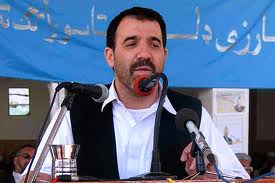Callout:
Drugs examined
Category one, mild
- Codeine (painkiller)
- Warfarin (blood thinner)
- Timolol maleate (eye drops)
Category three, severe
- Piriton (antihistamine)
- Ditropan (incontinence drug)
- Seroxat (antidepressant)
End of Callout
Commonly used drugs – for conditions such as heart disease, depression and allergies – have been linked to a greater risk of death and declining brain function by UK researchers.
They said half of people over 65 were prescribed these drugs.
The effect was greatest in patients taking multiple courses of medication, according to the study in the Journal of the American Geriatrics Society.
Experts said patients must not panic or stop taking their medicines.
The researchers were investigating medicines which affect a chemical in the brain – acetylcholine. The neurotransmitter is vital for passing messages from nerve cell to nerve cell, but many common drugs interfere with it as a side effect.
Eighty drugs were rated for their “anticholinergic” activity: they were given a score of one for a mild effect, two for moderate and three for severe. Some were given by prescription only, while others were available over the counter.
A combined score was calculated in 13,000 patients aged 65 or over, by adding together the scores for all the medicines they were taking.
A patient taking one severe drug and two mild ones would have an overall score of five.
Deadly consequences
Between 1991 and 1993, 20% of patients with a score of four or more died. Of those taking no anticholinergic drugs only 7% died.
Patients with a score of five or more showed a 4% drop in ratings of brain function.
Other factors, such as increased mortality from underlying diseases, were removed from the analysis.
However, this study cannot say that the drugs caused death or reduced brain function, merely that there was an association.
Dr Chris Fox, who led the research at the University of East Anglia, said: “Clinicians should conduct regular reviews of the medication taken by their older patients, both prescribed and over the counter, and wherever possible avoid prescribing multiple drugs with anticholinergic effects.
Dr Clare Gerada, chairman of the Royal College of GPs, said the findings of the study were important.
She told patients: “The first thing is not to worry too much, the second thing is to discuss it with your doctor or the pharmacist, and the third thing is do not stop your medicines without taking advice first.”
She said doctors reviewed medication every 15 months and were aware of the risks of combining different drugs.
Dr Fox said he wanted to conduct further research to investigate how anticholinergic drugs might increase mortality.
A more modern study is also thought to be desirable. Practices and drugs have changed since the data was collected two decades ago.
Ian Maidment, an NHS pharmacist in Kent and Medway, believes the situation may now be even worse.
He said the use of anticholinergic drugs had “probably increased as more things are being treated and more drugs are being used.”
Brain decline
Reduction of the neurotransmitter acetylcholine has already been implicated in dementia.
The drug Aricept is given to some patients with Alzheimer’s disease to boost acetylcholine levels.
Dr Susanne Sorensen, head of research at the Alzheimer’s Society, said a 4% drop in brain function for a healthy person would feel like a slow, sluggish day.
“If you are at a level where one little thing pushes you over into confusion, then that is much more serious,” she added.
“However, it is vital that people do not panic or stop taking their medication without consulting their GP.”
Rebecca Wood, chief executive of Alzheimer’s Research UK, said: “This comprehensive study could have some far-reaching effects. The results underline the critical importance of calculated drug prescription.”
via BBC News – Common medicines for elderly linked to death.






